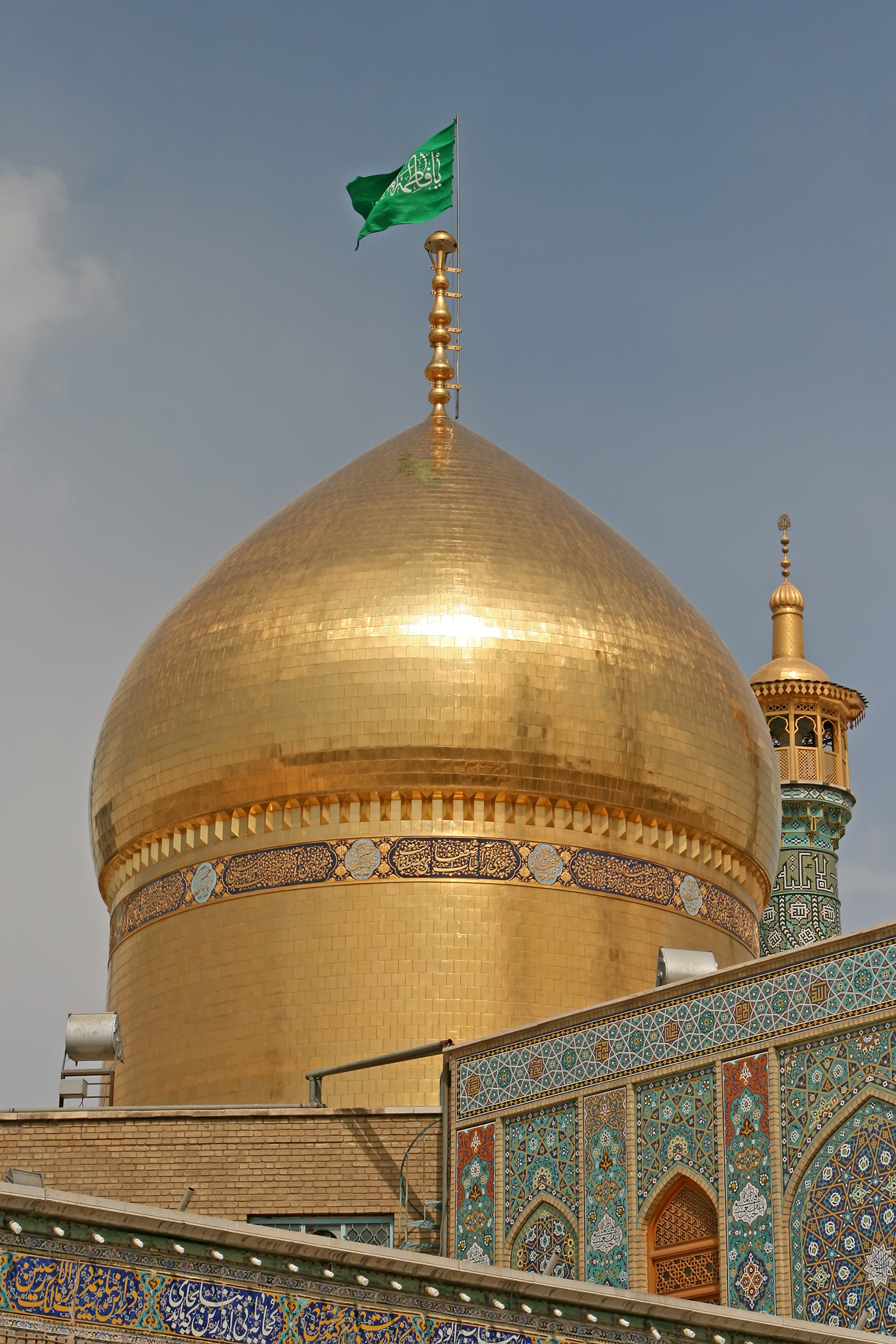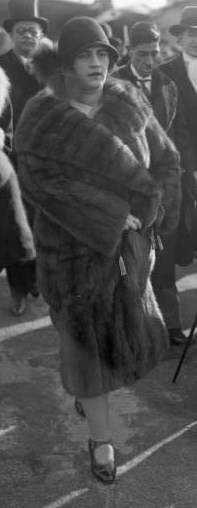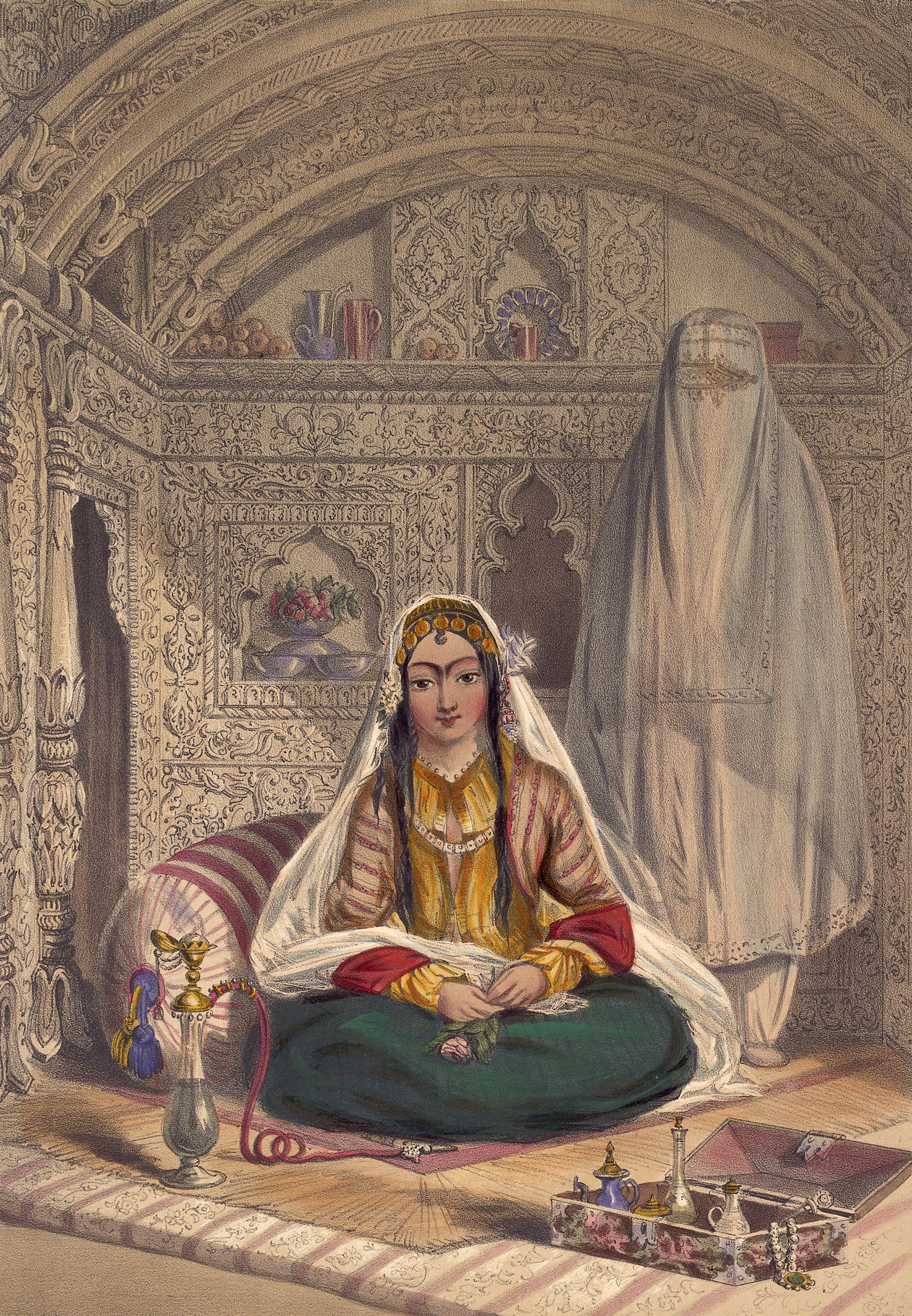|
Kashf-e Hijab
On 8 January 1936, Reza Shah of Iran (Persia) issued a decree known as ''Kashf-e hijab'' (also Romanized as and , ) banning all Islamic veils (including hijab and chador), an edict that was swiftly and forcefully implemented. Hoodfar, Homa (fall 1993). ''The Veil in Their Minds and On Our Heads: The Persistence of Colonial Images of Muslim Women'', Resources for feminist research (RFR) / Documentation sur la recherche féministe (DRF), Vol. 22, n. 3/4, pp. 5–18, Toronto: Ontario Institute for Studies in Education of the University of Toronto (OISE), Milani, Farzaneh (1992). ''Veils and Words: The Emerging Voices of Iranian Women Writers'', Syracuse, New York: Syracuse University Press, pp. 19, 34–37, Paidar, Parvin (1995): ''Women and the Political Process in Twentieth-Century Iran'', Cambridge Middle East studies, Vol. 1, Cambridge, UK; New York: Cambridge University Press, pp. 106–107, 214–215, 218–220, Majd, Mohammad Gholi (2001). ''Great Britain and Reza Shah ... [...More Info...] [...Related Items...] OR: [Wikipedia] [Google] [Baidu] |
Iranian Revolution
The Iranian Revolution (, ), also known as the 1979 Revolution, or the Islamic Revolution of 1979 (, ) was a series of events that culminated in the overthrow of the Pahlavi dynasty in 1979. The revolution led to the replacement of the Imperial State of Iran by the Islamic Republic of Iran, as the monarchical government of Mohammad Reza Pahlavi was superseded by the theocratic Ruhollah Khomeini, a religious cleric who had headed one of the rebel factions. The ousting of Pahlavi, the last Shah of Iran, formally marked the end of List of monarchs of Persia, Iran's historical monarchy. In 1953, the CIA- and MI6-backed 1953 Iranian coup d'état overthrew Iran’s democratically elected Prime Minister, Mohammad Mossadegh, who had nationalized the country's oil industry to reclaim sovereignty from British control. The coup reinstalled Mohammad Reza Pahlavi as an absolute monarch and entrenched Iran as a client state of the U.S. and UK. Over the next 26 years, Pahlavi consolidated ... [...More Info...] [...Related Items...] OR: [Wikipedia] [Google] [Baidu] |
Suicide
Suicide is the act of intentionally causing one's own death. Risk factors for suicide include mental disorders, physical disorders, and substance abuse. Some suicides are impulsive acts driven by stress (such as from financial or academic difficulties), relationship problems (such as breakups or divorces), or harassment and bullying. Those who have previously attempted suicide are at a higher risk for future attempts. Effective suicide prevention efforts include limiting access to methods of suicide such as firearms, drugs, and poisons; treating mental disorders and substance abuse; careful media reporting about suicide; improving economic conditions; and dialectical behaviour therapy (DBT). Although crisis hotlines, like 988 in North America and 13 11 14 in Australia, are common resources, their effectiveness has not been well studied. Suicide is the 10th leading cause of death worldwide, accounting for approximately 1.5% of total deaths. In a given year, ... [...More Info...] [...Related Items...] OR: [Wikipedia] [Google] [Baidu] |
Kanun-e Banuvan
Kanoun-e-Banovan ('Ladies’ Center') was an Iranian women's rights organization, founded on 14 October 1935. It played an important part in the Kashf-e hijab reform against compulsory hijab (veiling).Hamideh Sedghi, “FEMINIST MOVEMENTS iii. IN THE PAHLAVI PERIOD,” Encyclopaedia Iranica, IX/5, pp. 492-498, available online at http://www.iranicaonline.org/articles/feminist-movements-iii (accessed on 30 December 2012). In 1932, the Second Eastern Women's Congress was organized by the leading women's rights organization Jam'iyat-e Nesvan-e Vatankhah with state support. After the Congress was over, however, the organization was dissolved. The Iranian royal regime wished to support women's rights, since it was regarded as a vital part of their modernization program; however, it wanted to have control over the women's movement. In 1935, minister Ali-Asghar Hekmat called upon the leading veteran women's rights activists of the Iranian women's rights movement and offered them to ... [...More Info...] [...Related Items...] OR: [Wikipedia] [Google] [Baidu] |
Tehran
Tehran (; , ''Tehrân'') is the capital and largest city of Iran. It is the capital of Tehran province, and the administrative center for Tehran County and its Central District (Tehran County), Central District. With a population of around 9.8 million in the city as of 2025, and 16.8 million in the metropolitan area, Tehran is the List of largest cities of Iran, most populous city in Iran and Western Asia, the Largest metropolitan areas of the Middle East, second-largest metropolitan area in the Middle East after Cairo, and the 24th most populous metropolitan area in the world. Greater Tehran includes several municipalities, including, Karaj, Eslamshahr, Shahriar, Tehran province, Shahriar, Qods, Iran, Qods, Malard, Golestan, Tehran, Golestan, Pakdasht, Qarchak, Nasimshahr, Parand, Pardis, Andisheh and Fardis. In the classical antiquity, part of the territory of present-day Tehran was occupied by Rhages (now Ray, Iran, Ray), a prominent Medes, Median city almost entirely des ... [...More Info...] [...Related Items...] OR: [Wikipedia] [Google] [Baidu] |
Fatima Masumeh Shrine
The Shrine of Fatima Masumeh () is a Twelver Shi'ite shrine, located in the city of Qom, in the province of Qom, Iran. Qom is considered by Twelver Shia Muslims to be the second most sacred city in Iran after Mashhad. Fatima Masumeh was the sister of the eighth Twelver Shi'ite Imam 'Ali al-Rida, and the daughter of the seventh Imam Musa al-Kadhim (Tabari 60). In Shia Islam, women are often revered as saints if they are close relatives to one of the Twelver Imams. Fatima Masumeh is therefore honored as a saint, and her shrine in Qom is considered one of the most significant Shi'i shrines in Iran. Every year, thousands of Shi'i Muslims travel to Qom to honor Fatima Masumeh and ask her to ask God for blessings. Also buried within the shrine are three daughters of the ninth Twelver Imām Muhammad al-Taqī. Specifications The shrine consists of a burial chamber, three courtyards and three large prayer halls, totalling an area of . The three prayer halls are named: ''Tabātabā' ... [...More Info...] [...Related Items...] OR: [Wikipedia] [Google] [Baidu] |
Tadj Ol-Molouk
Tâdj ol-Molouk (; 17 March 1896 – 10 March 1982) was List of royal consorts of Iran, Queen of Iran as the second wife of Reza Shah, founder of the Pahlavi dynasty and Shah of Iran between 1925 and 1941. The title she was given after becoming queen means "Crown of the Kings" in the Persian language. She was the first queen in Iran after the Muslim conquest of Persia, Muslim conquest in the seventh century to have participated in public royal representation, and she played a major role in the ''kashf-e hijab'' (ban of the veil) in 1936. Biography She was the daughter of Brigadier General Teymūr Khan Ayromlou, of the Turkic Ayrums, Ayrum tribe, and wife Malek os-Soltan. Her marriage with Reza Khan took place in 1916. It was arranged and proved an advantage in the military career of Reza Khan at the time, due to the connections of her father, enabling him to advance in the Cossack hierarchy. Together, they had four children: Shams Pahlavi, Shams, Mohammad Reza Pahlavi, Mohammad ... [...More Info...] [...Related Items...] OR: [Wikipedia] [Google] [Baidu] |
Soraya Tarzi
Soraya Tarzi (Pashto/Dari: ثريا طرزی) (24 November 1899 – 20 April 1968) was Queen of Afghanistan as the wife of King Amanullah Khan. As Queen, she became one of the most influential women in the world at the time. She played a major part in the modernization reforms of Amanullah Khan, particularly regarding the emancipation of women. Owing to the reforms King Amanullah instituted, the country's religious sects grew violent. In 1929, the King abdicated to prevent a civil war and went into exile. Their first stop was India, then part of the British Empire. Early life and family background Suraiya Shahzada Tarzi was born on 24 November 1899, in Damascus, Syria, then part of the Ottoman Empire. She was the daughter of the Afghan political figure ''Sardar'' Mahmud ''Beg'' Tarzi, and granddaughter of ''Sardar'' Ghulam Muhammad Tarzi. She belonged to the Mohammadzai Pashtun tribe, a sub-tribe of the Barakzai dynasty. She studied in Syria, learning Western and moder ... [...More Info...] [...Related Items...] OR: [Wikipedia] [Google] [Baidu] |
Sediqeh Dowlatabadi
Sediqeh Dowlatabadi ( ; 1882 in Isfahan – July 30, 1961 in Tehran) was an Iranian Feminism, feminist activist and journalism, journalist and one of the pioneering figures in the Persian women's movement. On one of the occasions when Dowlatabadi was arrested for her activities, she replied: Sir, I was born a hundred years late, if I had been born earlier, I would not have allowed women to be so humiliated and trapped in your chains. Early life Dowlatabadi was born in 1882 in Isfahan. Her father was Hadi Dolatabadi and her mother was Khatameh Begum. Her father was a progressive religious jurist and allowed Dolatabadi to begin her education in Farsi, Persian and Arabic in Tehran. She then continued her secondary education at Dar-ol-Fonoun Academy. Aged 15, she married Etezad al-Hakma, but they divorced because Dowlatabadi was infertile. Career Dowlatabadi believed that the only route for the advancement of women was through their education. In 1917, she founded one of the fi ... [...More Info...] [...Related Items...] OR: [Wikipedia] [Google] [Baidu] |
The Guardian
''The Guardian'' is a British daily newspaper. It was founded in Manchester in 1821 as ''The Manchester Guardian'' and changed its name in 1959, followed by a move to London. Along with its sister paper, ''The Guardian Weekly'', ''The Guardian'' is part of the Guardian Media Group, owned by the Scott Trust Limited. The trust was created in 1936 to "secure the financial and editorial independence of ''The Guardian'' in perpetuity and to safeguard the journalistic freedom and liberal values of ''The Guardian'' free from commercial or political interference". The trust was converted into a limited company in 2008, with a constitution written so as to maintain for ''The Guardian'' the same protections as were built into the structure of the Scott Trust by its creators. Profits are reinvested in its journalism rather than distributed to owners or shareholders. It is considered a newspaper of record in the UK. The editor-in-chief Katharine Viner succeeded Alan Rusbridger in 2015. S ... [...More Info...] [...Related Items...] OR: [Wikipedia] [Google] [Baidu] |
Qamar-ol-Moluk Vaziri
Qamar-ol-Moluk Vaziri ( ; (1905 – 5 August 1959), born Qamar Khanum Seyed Hosayn Khan (), commonly known as "Qamar" ( ), was a celebrated Iranian singer, who was also the first woman of her time to sing in public in Iran without wearing a veil. She is known as "the Queen of Persian music". Singing with the vocal range of a mezzo-soprano, she was revered for her mastery of the repertoire of Persian vocal music ( radif-e âvâz), especially her sensitive rendition of tasnif and tarâna. Life and career Qamar was born in Takestan, a city in Iran. Her father died before she was born, and after her mother's death from typhoid fever when she was one and a half years old, she was raised by her grandmother, rowzeh-khân (singer of soaz) at the darbar of Naser al-Din Shah Qajar, Mollâ Khayr-ol-Nesâ' Eftekhâr-ol-Zâkerin (the latter name was bestowed on her by the king, meaning "Glory of the Narrators"). Qamar later recalled attending her grandmother's singing at the mosque, among ... [...More Info...] [...Related Items...] OR: [Wikipedia] [Google] [Baidu] |
Harem
A harem is a domestic space that is reserved for the women of the house in a Muslim family. A harem may house a man's wife or wives, their pre-pubescent male children, unmarried daughters, female domestic Domestic worker, servants, and other unmarried female relatives. In the past, during the history of slavery in the Muslim world, era of slavery in the Muslim world, harems also housed enslaved Concubinage in Islam, concubines. In former times, some harems were guarded by eunuchs who were allowed inside. The structure of the harem and the extent of monogamy or polygyny have varied depending on the family's personalities, socio-economic status, and local customs. Similar institutions have been common in other Mediterranean Basin, Mediterranean and Middle Eastern civilizations, especially among royal and upper-class families, and the term is sometimes used in other contexts. In traditional Persian residential architecture, the women's quarters were known as (), and in the Indian s ... [...More Info...] [...Related Items...] OR: [Wikipedia] [Google] [Baidu] |









